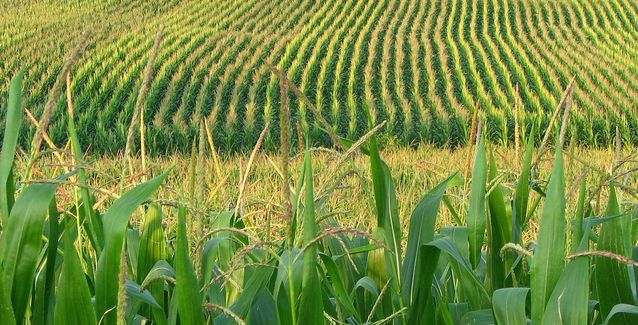Inflation, demand, and war in Ukraine push ag commodity prices higher
by March 29, 2022 7:41 am 613 views

Arkansas farmers have received little good news in recent years due to spiraling input costs, unpredictable weather, supply chain woes, and the impacts from the pandemic. One positive for farmers are higher commodity prices, which are predicted for the coming growing season partly impacted by the war in Ukraine.
Economists with the University of Arkansas System Division of Agriculture have revised enterprise crop budgets for the 2022 growing season, adjusting for significant changes in fuel, fertilizer and commodity prices.
Winter wheat futures are now trading at $10.93 a bushel, a 24.4% spike since February, according to the Chicago Board of Trade and Intercontinental Exchange. Corn is at $6.81 per bushel, an 8.4% increase, while soybeans are up 0.2% at $14.90 a bushel.
Cotton is up 6-cents per pound, a 5.5% uptick and rice is now trading 5.7% higher this month. Inflation and demand are other factors that are driving prices higher, according to economists.
Despite the commodity price increases, farmers are expected to face strong economic headwinds as the planting season begins in the coming weeks.
“Recent sharp increases in fertilizer and fuel prices since that time have significantly altered expectations related to the costs and returns of crop production for the current growing season,” said John Anderson, head of the Agricultural Economics and Agribusiness Department for both the University of Arkansas System Division of Agriculture and the Dale Bumpers College of Agricultural, Food and Life Sciences. “We want to be sure our tools provide the most updated variables to enable farmers to obtain the most accurate assessment of the potential financial impact of changing input prices.”
“The Impact of Fertilizer and Fuel Price Changes on Expected Costs and Returns for Arkansas Row Crops,” published by the Fryar Price Risk Management Center of Excellence, states the rising prices have roots in several sources. The report provides significant details for market changes in energy, crop commodities and variable costs in rice, corn, soybeans and cotton.
“Inflationary pressure has emerged across the economy with the waning of the COVID pandemic, as pent-up demand interacts with ongoing supply chain disruptions to result in higher prices on a wide variety of products,” Anderson said. “In addition, bullish market fundamentals in both the fertilizer and fuel markets have supported higher prices for these products.”
Fuel is rising due to increasing demand as consumers edge into pre-pandemic travel habits and domestic fuel production declines, the report said. In fertilizer markets, the strong outlook for commodity prices that began to emerge last fall set the stage for strong fertilizer demand and higher prices.
In addition to impacts on production costs, the conflict in Ukraine is having significant direct effects on commodity markets. The Russian invasion of Ukraine and sanctions on Russia have disrupted both fuel and fertilizer markets, adding further support for prices in those markets.
Russia and Ukraine together account for 20% of corn exports and 30% of wheat exports worldwide, according to the Foreign Agricultural Service of the U.S. Department of Agriculture. The United Nations Food and Agriculture Organization estimates that 20% to 30% of Ukraine’s winter wheat, corn and sunflower crops may not be planted or go unharvested in 2022.
